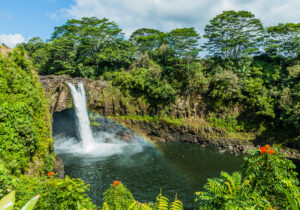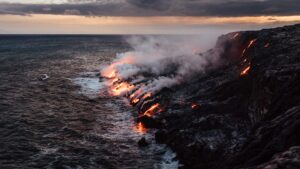Megan Shute for Only In Your State on Mauna Kea on the Big Island. Our tours explore much of the
beauty of the big island in luxury while avoiding the snow!
When visiting the Hawaiʻian Islands, a place known for its tropical climate, breathtaking beaches, and crystalline turquoise waters, most people don’t expect to see snow. After all, many people travel to the beautiful Aloha State in an attempt to escape cold weather and snow. But, atop Mauna Kea — the highest mountain peak in Hawaiʻi and one of the most fascinating mountains in the Pacific — you shouldn’t be surprised to see snow, depending on the season, of course.
While many might opt to forgo a trip to the snowy summit of Mauna Kea in Hawaiʻi because they have neglected to pack long pants and a jacket, there are countless locals who visit Mauna Kea to see snow in Hawaiʻi — whether, as transplants, they miss the snow, or they’ve lived here their entire life and have never experienced snow.
Mauna Kea measures in at 13,796 feet above sea level, the highest mountain peak in Hawaiʻi. In fact, when measured from its oceanic base deep in the vast Pacific, the mountain measures in at more than 33,000 feet tall — that’s higher than Mount Everest.
As a matter of fact, the peak is so tall that visitors are advised to stop at the visitor center for at least half an hour to acclimate to the elevation before continuing on to the summit.
The summit lies about the tree line and primarily consists of lava rock and alpine tundra. Growth is restricted by extremely cold temperatures, a short growing season, little rainfall, and snow during the winter months.
That’s right — snow in Hawaiʻi!
The last time Mauna Kea received significant snowfall was in January 2020. A powerful storm that pounded windward shores of the islands with torrential downpour dropped nearly two feet of snow on the mountain’s summit.
The snow never falls below 9,000 feet in elevation and doesn’t usually last long, but that doesn’t mean that residents don’t take full advantage of the snowy mountaintop. Though not maintained as a recreational ski area, many intermediate and expert skiers and snowboarders flock to the mountain during a snowstorm.
Don’t forget to call ahead, though — when it snows in Hawaiʻi, it takes crews a few days to clear away the ice and make the roads safe to drive again.
And even if there’s no snow, you’re still sure to get your fix of cold weather while at the summit of Mauna Kea in Hawaiʻi; winter temperatures average from 25 to 40 degrees Fahrenheit, while summer temperatures varying from 30 to 60 degrees. Bundle up — especially if you plan to stay after sunset to do a little stargazing.
After all, as the highest mountain peak in Hawaiʻi, Mauna Kea is one of the best destinations in the Aloha State to gander at the night sky.
For up to date weather conditions on the summit, check out Mauna Kea’s live streaming weather cams here. Have you visited the summit of Mauna Kea while it was covered in snow? To learn more about this surreal summit, read about how Mauna Kea is one of the most otherworldly destinations in the Aloha State.





